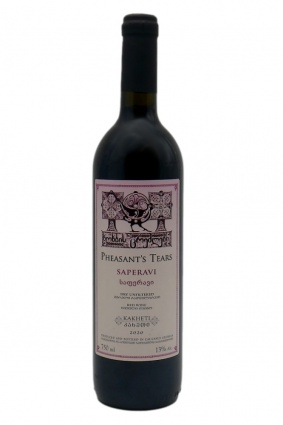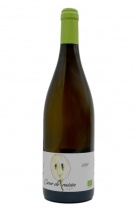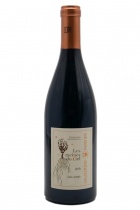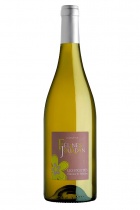Reference: pheasap
Producteur: Pheasant's Tears Géorgia

|
Add to notepad |
Saperavi 2019 is not presently in stock.
Please complete the form below to be notified when stock arrives:
Red wine - 75cl bottle
A superb video from the Unesco archives
http://vins-etonnants.blogspot.fr/2014/01/georgie-un-voyage-dans-le-temps.html

Organic culture
http://www.youtube.com/watch?v=DId6yk8Pn28
and you can click on
http://www.christiancallec.com/blog/2011/06/22/kakheti-visits-pheasant%E2%80%99s-tears/
We suggest to decant the bottle at least a couple of hours before serving.
This popular red is so dark in color it’s called black in Georgian, and it varies greatly according to the terroir in which it’s grown. Our estate Saperavi is a bold, earthy, dry red with flavors of black currant and toasted almond with an elegant, natural tannin structure. Enjoy Saperavi with roasted meats or rich, creamy sauces.
We suggest to open the bottle at least a couple of hours before serving.
Wine: red qvevri wine
Saperavi 100%
Acidity 5.8 g/l
Sugar 0.06 Alcohol 12.8%
Vineyards: 12 years
Plant protection: copper and sulphur
Grapes: 100% estate-grown
Certification: organic
Harvest: hand picked in crates
Fermentation: Clay Georgian Qvevri fully buried in the earth
Yeasts: Wild
Control the temperature of the alcoholic fermentation: no
Malolactic fermentation: yes, naturally triggered; say John: in both our white “amber” wines and red wines malolactic happens spontaneously, we have never had a wine that didn’t go under it, it is traditional in Qvevri wine making to allow and desire this
Aging: qvevri, bottle
Filtration: no
Clarification: no
Sulphuring: minimal amounts at crushing and bottling the total ends up to be in the bottle between 12-20
8000 bottles
Serving Temperature: 18-22°C
Pheasant’s Tears was born from a passion for Georgian culture and heritage. One balmy summer evening in 2005, John was painting in a vineyard near the highway in the Alazani Valley near the village of Tibaani . Gela was driving back on his tractor from his vineyard, and called from the road, “My name is Gela Patalishvili from Bodbis Khevi. Come visit me for dinner.” John asked, “Well, thank you, but we don’t know each other. Why am I being invited?” Gela replied, “If you are painting here, you must be as crazy about these vines as I am!” This was the beginning of a friendship that led to the formation of Pheasant’s Tears. In 2006, Russia began a trade embargo that ceased all sales of wine from Georgia to Russia, causing all of Georgia's winemakers to reflect and make some critical changes.
In 2007, in the spirit of innovation within the Georgian wine industry and with the help of the Waldman family, Pheasant’s Tears was formed with the purchase of a small vineyard in Tibaani. Making wine and preserving and sharing the traditions of this amazing country for us is a labor of love, and this common love has brought us together as a family.
In the summer of 2009, John was exhibiting some of his paintings at the local branch of Georgia’ National Museum in Sighnaghi. As it happened, Erik Andermo, a Swede who was then working for the European Union Monitoring Mission to Georgia, happened to be in town for a short holiday with his family. This meeting became the starting point of a friendship that has deepened and which would eventually lead to the next chapter in Pheasant’s Tears’ history. In early 2010, Erik was offered to become a partner in Pheasant’s Tears. At the same time he decided to set up Georgian Wine Legacy AB in Sweden together with two friends from Stockholm School of Economics (SSE), Jakob Mörndal and Henrik Callerstrand, with an ambition to bring the best of the Georgian wine heritage to Scandinavia and Northern Europe.
VINEYARD
Pheasant’s Tears vineyards are overseen by our winemaker, Gela Patalishvili. Gela’s family has been farming and making wine in Kakheti for over 8 generations, and it is Gela’s sincere desire to preserve the traditional wine making techniques that have made Georgia a home for viticulture since 6000 BC. A combination of high quality soil and diligent vineyard care helps us achieve the quality of fruit necessary to create our traditional but elegant wines.
Our commitment to organic principles started with the purchase of the Saperavi vineyards in 2007, for which we will receive international organic certification in 2010. We find these practices essential both in order to protect the land from misuse and harsh chemicals and to help develop the rich terroir that is reflected in each bottle of our wines. We are also committed to seeking out rare endemic varietals and bringing them to market. Georgia has over 500 species of grape to offer, many limited to tiny micro-regions at specific elevations and most of which are unfamiliar even to the knowledgeable Georgian wine consumer. This rich heritage is in danger of being lost entirely, relegated to DNA databases and laboratory experiments. We feel it is both our duty and our great honor to bring these ancient vines back to life, to produce wines like those enjoyed by the ancestors, and to share that wine with the world. Kakheti Pheasant’s Tears estate vineyard plantings flow down the slopes of the eastern Georgian Kiziqi province overlooking the Alazani Valley and snow-capped Caucasus Mountains.
Our site is located near the village of Tibaani in the shadow of the 6th C Monastery of St. Stephen. The terroir here is special, with long summer sunlight of over 14 hours a day and evenings cooled by the breeze from the gorge.
The soil is composed of lime rock, chalk and dark clay on the surface, while a meter deep lies a sandy loam mixed with gravel, providing excellent drainage for the vines’ root systems.
Our growing locations throughout Georgia with harvest volume:
The village of Manavi, Kakheti region (Mtsvane varietal = 4 tons/hectare)
The village of Argokhi/Alaverdi, Kakheti region (Kisi varietal = 3.5 tons/hectare)
The village of Tibaani, Kakheti region (Saperavi varietal = 4 tons/hectare)
The village of Bodbiskhevi, Kakheti region (Rkatsiteli varietal = 5 tons/hectare)
The village of Mukhrani, Kartli region (Shavkapito and Tavkveri varietals = 3 tons/hectare, Chinuri = 4/hectare)
WINES
All of our wines at Pheasant’s Tears are fermented and aged in qvevri, a unique Georgian vessel used to ferment and store wine.
Qvevri were the first vessels ever to be used for wine fermentation, with archaeological finds dating back to 6000 BC.
Qvevri are clay vessels lined with beeswax and completely buried under the ground where the temperature stays even thoughout the year, allowing the wines to ferment in the natural coolness of the earth.
Pheasant’s Tears qvevri vary in age but, some date back to the mid 19th C. We built our cellar in the vineyard itself to minimize the damage to the grapes in transportation, allowing us to harvest and press before the hot hours of the sun. It is usually a question of hours before the harvested grapes are already pressed and in the cool qvevri.
In accordance with Georgian traditional winemaking methods, the ripest of stems are added to the grape skins, juice and pits, for both our reds and our whites.
The maceration time depends on varietal and the size of the qvevri and varies between 3 weeks and 6 months.
Since all of our wines are aged exclusively in qvevri, no flavors are imparted from oak barrels. What some might consider a lack of oak we view as an opportunity to let the quality of the grapes and the resulting wine shine through. Several of our 2009 varietals are being bottled for the first time in over a hundred years. Let Pheasant’s Tears introduce you to ancient varietals made in the vibrant Georgian tradition.
13 % Alc. Vol.












